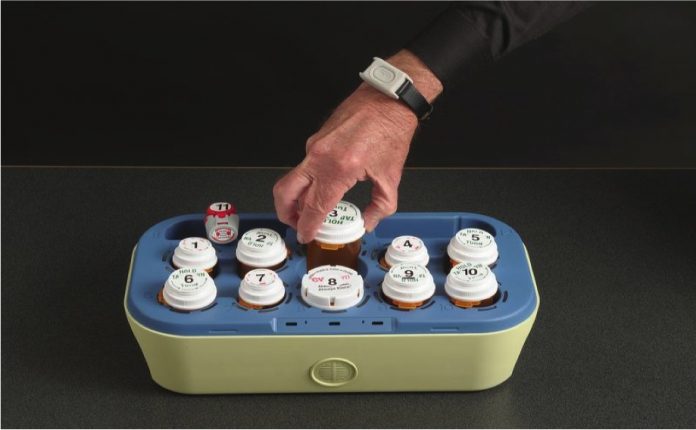Yes, seniors are living longer and stronger – the result of a combination of greater education about the links of exercise and diet to increased longevity and mental acuity, and medical advances that have transformed once deadly and disabling diseases into curable and manageable ones. But lurking beneath surface of this positive wave is a potentially deadly undertow – a dangerous combination of physician overprescription (known as polypharmacy) and patient “pill confusion” – that has created a flood of seniors taking too many (sometimes unnecessary) medications who suddenly find themselves overwhelmed and unequipped to manage their intake.
According to the American Society of Consultant Pharmacists, people aged 65 to 69 take an average of 15 prescriptions a year, and those aged 80 to 84 take 18 prescriptions a year. And that’s in addition to the myriad over-the-counter drugs, herbal remedies, vitamins and minerals they may take, any of which — alone or in combination — could cause more problems than they cure. Among people over 65, 44 percent of men and 57 percent of women take five or more nonprescription and/or prescription drugs a week, and 12 percent take 10 or more.
Research has shown that patients taking five to nine medications have a 50 percent chance of an adverse drug interaction, increasing to 100 percent when they are taking 20 or more medications. Health Research Funding reports that polypharmacy accounts for almost 30 percent of all hospital admissions and is the fifth leading cause of death in the U.S.
Combine these startling numbers with a recent World Health Organization study that estimated that 50 percent of people with chronic diseases in developed countries fail to take their medicines as prescribed, whether from forgetfulness, concern about side effects or other reasons, and the need to act to stem the rising tide of this lethal one-two punch takes on even greater urgency.
In addition to the increased health risks of polypharmacy, every year thousands of patients put their lives at risk by through “pill confusion” – forgetting to take their medication entirely, taking the wrong medication, taking the incorrect medication dosage, or taking medication that may have expired.
This medical noncompliance costs the health care system in the United States $100 billion to $290 billion a year from emergency room visits, hospital stays and other costs related to worsening medical conditions, according to the Network for Excellence in Health Innovation.
Fortunately, the same pillars that have empowered seniors to lead longer and stronger lives – education and technological advances – are the same ones they can use to mitigate the very real side effects of polypharmacy and pill confusion.
The most important – and most basic – measure patients can take to reduce their risk of polypharmacy and pill medication misues is to ensure that all of their healthcare providers have a complete and up-to-date list of their medications, including dosages and when they should be taken – including OTC medications, supplements, and vitamins.
Patients should maintain an accurate list of all their medications that includes what the various drugs are supposed to treat, their generic and brand names, dose, frequency and method of administration. They should also keep a list of all over-the-counter remedies and supplements they take regularly or frequently. Then, at each medical visit, bring both lists along and make sure the doctor reviews them.
But while these basic preventative measures are important, they ignore a fundamental reality: as we age our episodic memory – the “who”, “what”, where”, “when” “why” and “how” of our daily lives – and longer-term memory declines.
Fortunately, doctors, designers, engineers, and scientists are also stepping up and bolstering the education pillar by embracing and introducing new, more substantive technologies to assist seniors in their daily medication regimen.
Companies from PillPack – which ships individual, pre-packaged medications to patients with the date and time a medication should be taken – to the new RxMonitor, which combines a physical pill dispenser that alerts patients to take medication with an online system to monitor their dosage – are among the leaders who have emerged to help seniors effectively monitor their medication intake.
Whatever form the delivery or notification system takes, the desired outcome is the same: a better-informed population of patients better equipped to combat the distressing and very real dangers of polypharmacy and pill confusion that disproportionately affect older adults.























